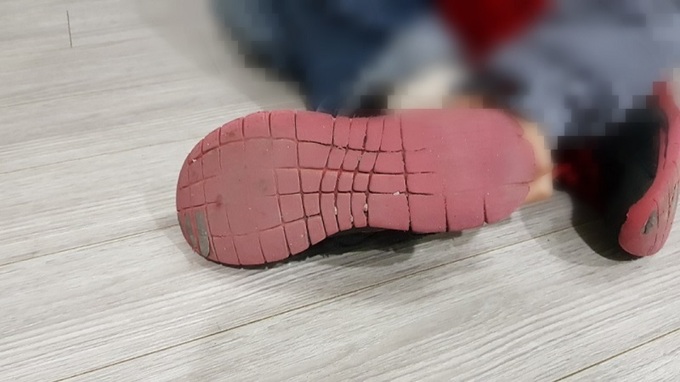As part of its enforcement activities, the Food and Drug Administration sends warning letters to entities under its jurisdiction. Some letters are not posted for public view until weeks or months after they are sent. Business owners have 15 days to respond to FDA warning letters. Warning letters often are not issued until a company has been given months to years to correct problems.
Oceanitan, Inc.
A food firm in California is on notice from the FDA for serious violations of the Current Good Manufacturing Practice, Hazard Analysis, and Risk-Based Preventative Controls for Human Food regulation.
In a Sept. 7, 2023, warning letter, the FDA described a Feb. 16, 2023, through April 6, 2023, inspection of Oceanitan, Inc.’s food manufacturing facility in Los Angeles, CA.
The FDA’s inspection of Oceanitan, Inc. was initiated due to a consumer complaint that involved a case of infant botulism. The warning letter did not provide details about the illness.
At the conclusion of the inspection, FDA issued a Form FDA 483, Inspectional Observations, listing the deviations found at the firm.
Some of the significant violations are as follows:
Hazard Analysis and Risk-Based Preventive Controls:
1. The firm’s hazard analysis did not identify and evaluate known or reasonably foreseeable hazards to determine whether there are any hazards requiring a preventive control for their refrigerated RTE ROP baby food, as required. Specifically, their hazard analysis for (redacted) RTE baby food did not identify and evaluate the following hazards to determine whether they require a preventive control:
a. The firm did not identify and evaluate bacterial growth and/or toxin formation due to reduced oxygen packaging (i.e., Clostridium botulinum (C. botulinum)) during storage of refrigerated RTE ROP baby food products. Their hazard analysis identifies pathogens including L. monocytogenes as a biological hazard requiring a preventive control at the Cold Storage step, but it does not specifically identify spore forming C. botulinum growth and/or toxin formation due to reduced oxygen packaging. RTE baby food products (including (redacted), and (redacted)) are packaged and stored in ROP. Various ingredients in these products grow in the ground or are associated with soil, where spores of C. botulinum may be present. Therefore, bacterial growth and/or toxin formation due to reduced oxygen packaging (i.e., anaerobic C. botulinum) is a known or reasonably foreseeable hazard at the cold storage step. These products do not receive a treatment lethal to nonproteolytic or proteolytic C. botulinum before or after packaging, and their formulation does not control for the growth and/or toxin formation of C. botulinum. A knowledgeable person manufacturing/processing food in their circumstances would identify bacterial growth and/or toxin formation due to reduced oxygen packaging as a hazard requiring a preventive control. Process controls include procedures, practices, and processes to ensure the control of parameters during operations. Such controls could include formulation (e.g., decreasing pH or water activity), heat processing (e.g., a cook that targets nonproteolytic C. botulinum), or refrigeration (e.g., temperature control below (redacted) with the use of time-temperature indicators on each package). Process controls must include the parameters associated with the control of the hazard and the minimum and maximum values needed to significantly minimize or prevent the hazards.
The FDA noted that they do not have adequate controls in place for bacterial growth and/or toxin formation due to reduced oxygen packaging, as evidenced by the following:
i. The firm’s written Process Control (HACCP Plan) states, “Product temperature will not rise above (redacted), In the event of a natural disaster, loss of power for an extended period of time, or air temperature above (redacted) for any other reason, product temperatures will be monitored to ensure product temperature does not exceed (redacted).” This maximum value for temperature is insufficient to control for the hazard of C. botulinum toxin formation in RTE sealed baby food in ROP. Nonproteolytic C. botulinum can grow at a minimum temperature of (redacted); it can grow and produce a deadly toxin after two days when temperatures are between (redacted)°F. During the inspection, they indicated that sealed baby food products can remain in Cooler (redacted) for up to (redacted) until being transported off-site.
ii. On Feb. 21, 2023, during the storage of RTE ROP (redacted) baby food lot # (redacted) and (redacted) lot # (redacted), FDA investigators measured the air temperature of Cooler (redacted) at 5:58 a.m. using an FDA-issued calibrated thermometer, and the temperature was measured to be 46.0°F. At the same time, their firm’s thermometer read the air temperature to be approximately 39.0°F. They stated that the dial thermometer in Cooler (redacted) is not calibrated. In addition, their Daily Cooler & Freezer Temperature Check monitoring record, dated Feb. 21, 2023, used to document the air temperature of Cooler (redacted), indicates the temperature measured by their firm exceeded (redacted)F on several occasions. For example, this monitoring record identified the following air temperatures during storage on Feb. 21, 2023:
• 39.0 degrees Fahrenheit at 10:10 a.m.
• 40.0 degrees Fahrenheit at 2:12 p.m.
• 40.0 degrees Fahrenheit at 4:12 p.m.
• 39.0 degrees Fahrenheit at 10:15 a.m.
Furthermore, on Feb. 16, 2023, during the storage of RTE ROP (redacted) baby food lot # (redacted), an FDA investigator measured the air temperature of Cooler (redacted) at 11:57 a.m. using an FDA issued calibrated thermometer, and the temperature was measured to be 42.4°F. In addition, the air temperature recorded for Cooler (redacted) in their Daily Cooler & Freezer Temperature Check monitoring record, dated Feb. 16, 2023, documented that the air temperature was 39.0°F at 12:40 p.m.
iii. On Feb. 3, 2023, FDA collected Sample #1207380 of 12 – 4 fl oz (118 mL) unopened plastic jars of assorted (redacted) flavors from the complainant involved in the infant botulism consumer complaint. Non-toxin forming Clostridium botulinum was detected in subsample 11, and Clostridium beijerinckii was detected in subsample 12. In addition, FDA’s inspection included the collection of finished product samples consisting of (redacted) – approximately 4 fl oz subsamples of (redacted) (redacted) baby food (Sample #1189052) and (redacted) – approximately 4 fl oz subsamples of (redacted) (Sample #1189054), both collected on March 7, 2023, in which non-toxin forming C. botulinum was detected in subsamples 26 and 28, respectively.
b. The firm did not identify and evaluate recontamination with environmental pathogens (e.g., Listeria monocytogenes) at steps where their RTE baby food products are exposed to the environment. The cooked (steamed) RTE ingredients used for the RTE baby food products are exposed to the environment at post-cooking steps (including Cooling, Blending, and Filling) until the packages are sealed. The baby food products do not receive a lethal treatment or otherwise include a control measure (such as a formulation lethal to the pathogens) that would significantly minimize pathogens. Therefore, recontamination with environmental pathogens is a known or reasonably foreseeable hazard. Further, a knowledgeable person manufacturing/processing food in your circumstances would identify recontamination with environmental pathogens as a hazard requiring a preventive control. Sanitation controls include procedures, practices, and processes to ensure that the facility is maintained in a sanitary condition adequate to significantly minimize or prevent hazards such as environmental pathogens and biological hazards due to employee handling. Note that environmental monitoring is required if contamination of an RTE food with an environmental pathogen is a hazard requiring a preventive control.
In the firm’s response, they stated they purchased (redacted) new temperature data monitors for Coolers (redacted) and submitted the accompanying Certificates of Calibration. They stated “these will ensure monitoring visibility even when staff are not on site via mobile application. They have alarm settings to monitor set temperature parameters.” The firm also stated their QA staff will reference the data from the monitors “(redacted) temperatures plus the use of calibrated handheld thermometers to ensure Cooler temperatures do not go over (redacted)F while stored WIP and finished product is inside cooler (redacted) and (redacted).” However, they did not address how they will monitor the air temperature in Cooler (redacted) or what the maximum temperature must be; Cooler (redacted) was observed being used for the storage of RTE ROP baby food products during the inspection. They also did not indicate whether the dial thermometer in Cooler (redacted) has been calibrated since the inspection.
Furthermore, the firm stated that they entered into a contract with a third-party lab to initiate environmental monitoring the first week of June 2023. The monitoring will include Zones (redacted) and will become (redacted) task conducted by their QA Department. Although they stated the “environmental program will ensure that our sanitation procedures are adequate to prevent the hazard of recontamination with environmental pathogen,” they did not submit a written environmental monitoring program.
Lastly, the firm stated they have not manufactured any products for (redacted). dba (redacted) since (redacted), nor have they used their equipment, packaging, and raw inventory to make any other products. (Redacted). FDA noted that their response did not address the specific violation by indicating whether they have reevaluated the hazard analyses associated with refrigerated RTE ROP baby food products manufactured at their facility.
2. The firm did not implement their written procedures for monitoring a preventive control, including the frequency with which they are to be performed, as required. Specifically, for “(redacted) Food” including RTE pureed baby food products (made from fruits, vegetables, and grains such as (redacted)), they have a preventive control at the Cooling step to control pathogen growth. The firm did not follow the requirements in their preventive control procedures and forms as evidenced by the following:
a. The critical limit in the preventive control procedure is listed as: “(redacted)” for various pathogens including Bacillus cereus (B. cereus) and L. monocytogenes. However, when FDA investigators asked for the specific cooling parameters that were being followed in practice, they instead provided the United States Department of Agriculture (USDA) Food Safety and Inspection Service (FSIS) Appendix B to Compliance Guidelines, updated June 1999, entitled “Compliance Guidelines for Cooling Heat-Treated Meat and Poultry Products (Stabilization).” The latter document provides different cooling parameters than those listed in the FSPCA manual.
b. The firm monitoring record for cooling states: “To avoid foodborne pathogen the following must be met: Time needs to be recorded when temperature has reached (redacted)°F. Once at (redacted)°F, product has (redacted), product has (redacted) to reach (redacted)F.” However, their monitoring record for post-steaming cooling shows the following temperatures taken during the cooling of (redacted), during the processing of (redacted) baby food lot # (redacted):
| Ingredient and Date | Time/Temperature at start of cooling | Time it reached (redacted) | Temperature after (redacted) | Temperature after (redacted) |
| (redacted) | (redacted) | (redacted) | (redacted) | (redacted) |
The following day, an FDA investigator measured the internal temperature of the above-mentioned (redacted), which was stored in a metal tray within Cooler (redacted). On Feb. 22, 2023, at (redacted)., the temperature of the (redacted) located around the center of the tray was measured to be (redacted)F. The firm did not take corrective actions when the cooling temperature parameters were not met. In addition, you do not monitor the internal temperature of the cooked (redacted) to determine when it reaches a temperature of ≤ (redacted)F. In practice, the temperature of the (redacted) is monitored for up to (redacted) from the start of cooling and is not measured again until the grinding step, which is typically conducted during production the following day.
c. The monitoring frequency in the preventive control procedure is listed as: “QA or trained designee will monitor time and temperature at minimum once per hour at the thickest part of the product.” However, the firm are not monitoring or recording the time and temperature during cooling (redacted), as their monitoring record for cooling only shows temperatures recorded at the start of cooling, the time the product reaches (redacted)F, after (redacted), and (redacted).
In their response, they stated they have not manufactured any products for (redacted) since March 3, 2023, nor have they used their equipment, packaging, and raw inventory to make any other products. They further indicated that all of their inventory and equipment is on collection hold and will be liquidated once they have the rights. FDA will verify they are no longer manufacturing (redacted) products during the follow-up inspection.
Current Good Manufacturing Practice:
1. The firm plant was not constructed in such a manner that floors, walls, and ceilings may be adequately cleaned and kept clean and in good repair; and that drip or condensate from fixtures, ducts and pipes does not contaminate food or food-contact surfaces, as required. Specifically,
a. On Feb. 16, 2023, while their firm was filling and sealing (redacted) baby food lot # (redacted), the investigator observed water dripping from the condenser unit in cooler (redacted) where they fill jars of baby food, which created standing water on the floor. A (redacted) containing trays of RTE uncovered jars of (redacted) baby food was stored over the standing water. The bottom tray of product was approximately 7 inches from the floor and standing water.
b. During production on Feb. 21, 2023, a green rolling container containing RTE steamed broccoli was stored next to wet floors with uneven surfaces/holes in the kitchen.
The firm’s April 27, 2023 response stated that a “new (redacted) was installed to eliminate the dripping by 3rd party contractor,” and they provided a photograph as evidence of corrective action. However, it’s unclear if the catch pan prevents droplets from splashing out of the catch pan and onto product or food contact surfaces. In addition, they submitted a copy of their purchase order/work order issued to a third-party for the repair of all uneven surfaces/holes containing water on the kitchen floor. They “estimate based on the contractor’s timeline that the work will be completed by 5/28/2023.” FDA will verify the adequacy and effectiveness of the firm’s corrective actions during the follow-up inspection.
Misbranding Violations:
The firm’s (redacted), and (redacted) baby food products are misbranded in that the product labels fail to declare any nutrition information required.
The firm’s (redacted) is misbranded within the meaning of section in that the product is fabricated from two or more ingredients and the common or usual name of each ingredient is not declared on the label, as required. Specifically, the ingredients for the (redacted) are not listed on the product label in descending order of predominance by weight, as required. For example, according to their (redacted) Recipe document, the
(redacted)) contains the following ingredients:
• (redacted)
• (redacted)
• (redacted)
• (redacted)
• (redacted)
The firm’s Bell Pepper Apple Bowl label fails to declare water as an ingredient. Based on the recipe, ice was used in making this product but it is not declared on the label. In accordance with CPG Sec 555.875 Water in Food Products (Ingredient or Adulterant), water must be declared as an ingredient unless all water added during processing is subsequently removed by baking or some other means during processing.
The full warning letter can be viewed here.
(To sign up for a free subscription to Food Safety News, click here.)
Note: This article have been indexed to our site. We do not claim legitimacy, ownership or copyright of any of the content above. To see the article at original source Click Here












